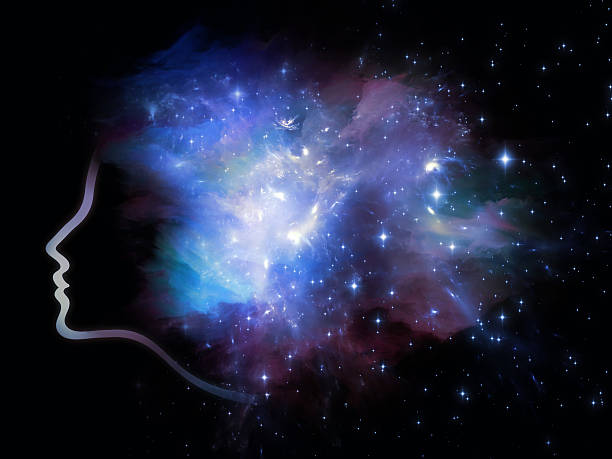Science has brought us breathtaking knowledge about the universe, from the structure of DNA to the vast web of galaxies beyond our own. Yet, for all the brilliance of scientific discovery, mysteries still linger—puzzles that resist explanation, phenomena that tease at the edges of human understanding. Some are cosmic, stretching across billions of light-years; others are right here on Earth, hidden within the intricacies of life, consciousness, or even the quirks of our own bodies.
The weirdest scientific mysteries are not just curiosities. They remind us that our knowledge, vast as it seems, is still incomplete. They invite us to keep asking questions, to remain humble, and to marvel at the unknown. In this article, we’ll explore twelve of the strangest things that science, despite all its advances, still cannot fully explain.
1. Why We Sleep
Sleep seems like a simple biological necessity, but when scientists try to explain why we sleep, the answers become elusive. Every night, humans and animals surrender to a state of unconsciousness, leaving them vulnerable to predators. From an evolutionary standpoint, this seems dangerous—so why hasn’t nature eliminated it?
We know sleep is vital: without it, the brain and body malfunction, and prolonged sleep deprivation can be fatal. Sleep helps consolidate memories, regulate hormones, and restore energy. Yet, none of these fully explains why sleep evolved in the first place. Why didn’t evolution find a way to perform these functions while awake?
Some scientists suggest sleep may serve a purpose we still don’t fully grasp, perhaps involving deep neural repair or the clearing of toxic proteins from the brain. Whatever the reason, the act of closing our eyes each night and drifting into dreams remains one of the weirdest mysteries of biology.
2. The Placebo Effect
Imagine taking a sugar pill and feeling your pain vanish. This is the placebo effect—a phenomenon where people experience real improvements in health after receiving a treatment with no active ingredients.
Scientists have proven the placebo effect is genuine: patients report reduced pain, improved mood, and even measurable changes in brain activity. But here’s the puzzle: how does belief alone trigger such powerful physical effects?
Theories suggest that expectation alters brain chemistry, releasing natural painkillers like endorphins. Some researchers believe it reflects the brain’s ability to “reprogram” itself based on belief. But the precise mechanism remains unclear. Even stranger, placebos sometimes work even when patients know they’re taking a placebo, adding a new twist to this enigma.
The placebo effect reveals the weird and powerful connection between mind and body—a connection science still struggles to fully explain.
3. Dark Matter
Look into the night sky, and everything you see—stars, planets, galaxies—makes up less than 5% of the universe. The rest is invisible. About 27% is believed to be dark matter, a mysterious substance that cannot be seen, touched, or directly measured.
Astronomers infer dark matter’s existence because galaxies rotate too fast to be held together by visible matter alone. Something unseen must be providing the extra gravity. But despite decades of searching, no one knows what dark matter actually is.
It might be composed of exotic particles, like WIMPs or axions. Or perhaps our understanding of gravity itself is flawed. Until dark matter is detected directly—or replaced by a better theory—it remains one of the strangest and most stubborn mysteries in physics.
4. Dark Energy
If dark matter is strange, dark energy is even stranger. In 1998, astronomers discovered that the universe’s expansion is not slowing down as expected—it’s accelerating. To explain this, scientists proposed the existence of dark energy, a mysterious force pushing galaxies apart.
Dark energy is thought to make up 68% of the universe, yet we have no idea what it is. Some theories suggest it’s an inherent property of space itself, while others hint it may point to entirely new physics.
For now, dark energy remains invisible, immeasurable, and profoundly weird—a force dominating the universe but utterly beyond our grasp.
5. Why We Yawn
Yawning is universal: humans, animals, even reptiles do it. But why we yawn remains unclear.
For years, scientists believed yawning helped increase oxygen intake or cool the brain. Yet studies have found little evidence to support these explanations. Another theory suggests yawning is social, a way for groups of animals—including humans—to synchronize behavior. That might explain why yawns are contagious.
But the exact biological function remains mysterious. Is it an evolutionary relic? A hidden neurological function? Until science finds the answer, yawning will continue to be one of the strangest little quirks of biology.
6. The Mpemba Effect
Here’s a weird one: sometimes, hot water freezes faster than cold water. This odd phenomenon is called the Mpemba effect, named after a Tanzanian student, Erasto Mpemba, who observed it in the 1960s.
The effect has been reproduced in experiments, but explanations vary. Some suggest it’s due to differences in evaporation, convection, or the behavior of hydrogen bonds in water molecules. Yet no single theory fully explains why hot water can beat cold in the race to freeze.
This simple, everyday mystery—why hot water freezes faster—remains unsolved, proving that even the most ordinary substance on Earth still holds secrets.
7. Consciousness
Perhaps the weirdest mystery of all is consciousness—the subjective experience of being aware. We know the brain is made of neurons firing electrical signals, but how do those signals create the feeling of thoughts, emotions, or self-awareness?
This is called the hard problem of consciousness, and despite advances in neuroscience, no one has cracked it. Some argue consciousness is an emergent property of complex computation. Others believe it may be a fundamental aspect of the universe, like space or time.
Until we solve it, consciousness remains the strangest puzzle of all: how can matter, organized in a particular way, give rise to the inner experience of “me”?
8. Fast Radio Bursts
In 2007, astronomers detected a mysterious signal from space: a fast radio burst (FRB)—a sudden, intense pulse of radio waves lasting only milliseconds. Since then, dozens more have been discovered.
FRBs are incredibly powerful, releasing as much energy in a split second as the Sun does in days. Some repeat, others don’t. Their origins remain a mystery. Possible explanations include collapsing stars, magnetars, or even alien civilizations (though there’s no evidence for the latter).
Whatever they are, FRBs represent one of the universe’s strangest and most exciting cosmic puzzles.
9. The Pioneer Anomaly
In the 1970s, NASA launched the Pioneer 10 and 11 spacecraft to explore the outer solar system. As they drifted into deep space, scientists noticed something odd: both spacecraft were slowing down more than expected.
This unexplained deceleration, known as the Pioneer anomaly, baffled scientists for years. Some suggested it was due to leaks of heat or radiation from the spacecraft, while others wondered if it pointed to new physics.
Although recent studies suggest heat emissions may explain much of the anomaly, doubts remain. The Pioneer anomaly is a reminder that even our own spacecraft can surprise us with mysteries.
10. Why the Sun’s Corona Is So Hot
The Sun’s surface is about 6,000°C, but its outer atmosphere—the corona—soars to over 1 million°C. This makes no sense: normally, temperature decreases as you move away from a heat source.
Why is the Sun’s corona so much hotter than its surface? Scientists have proposed that waves of magnetic energy or “nanoflares” heat the corona, but no explanation fully accounts for the extreme temperatures.
This solar mystery is not just academic—it directly affects space weather, which can disrupt satellites, power grids, and communication systems on Earth.
11. The Wow! Signal
In 1977, an Ohio State University radio telescope picked up a powerful, unusual signal from deep space. The 72-second transmission, later nicknamed the “Wow! signal”, was so remarkable that the astronomer Jerry Ehman circled it on the computer printout and wrote “Wow!” in the margin.
The signal appeared to come from the constellation Sagittarius, but despite decades of follow-up searches, it was never detected again. Was it a natural phenomenon, a one-time cosmic event, or perhaps even a sign of extraterrestrial intelligence?
To this day, the Wow! signal remains one of the most tantalizing mysteries in the search for life beyond Earth.
12. Why the Universe Exists at All
Perhaps the weirdest mystery of all is simply this: why is there something rather than nothing?
Physics suggests that after the Big Bang, equal amounts of matter and antimatter should have been produced. But if that were the case, they would have annihilated each other, leaving behind only energy. Yet, here we are—living in a universe full of matter.
Why did matter win out over antimatter? What tipped the balance in favor of existence itself? This question remains one of the deepest in science. Without an answer, the fact that we exist at all feels like the ultimate cosmic mystery.
Conclusion
From yawning to dark energy, from the placebo effect to the existence of the universe itself, science is filled with weird, unanswered questions. These mysteries are not failures of science but signs of its vitality. They remind us that discovery is ongoing, that curiosity is endless, and that the universe is stranger and more wonderful than we can imagine.
Each unsolved puzzle is an invitation: to look deeper, to think differently, and to keep searching for answers. Because the weirdest mysteries are often the ones that lead to the greatest discoveries.






